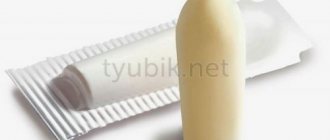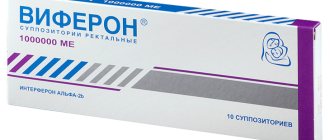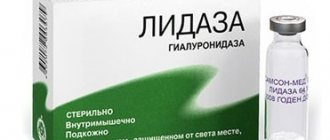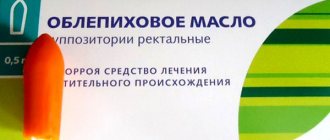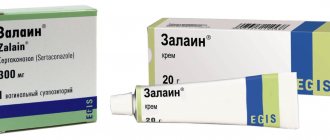Indications for use
Longidase is prescribed to adult patients and children of the older age group (from 12 years of age) for monotherapy or complex treatment of ailments in which hyperplastic changes in connective tissues are observed, including those that developed during inflammation:
- Gynecology: the presence of adhesions in the pelvic organs during inflammatory processes occurring in the internal genital organs (chronic form) after surgery; synesia in the uterine space, infertility (tubal-peritoneal type), chronic endometritis
- Urology: Peyronie's disease, chronic prostatitis, strictures in the organs of the genitourinary system (urethra, ureters), cystitis (interstitial type), the initial phase of benign hyperplastic changes in the prostate gland, prevention of scarring of tissue and strictures after surgery on the organs of the genitourinary system
- Surgery: carrying out preventive measures and treating adhesions formed after operations in the abdominal cavity; non-healing wound surfaces
- Phthisiology, pulmonology: pleurisy, pneumonia (interstitial type), siderosis, alveolitis (fibrosing form), pneumofibrosis, various forms of tuberculosis
- Dermatovenereology: localized scleroderma, prevention of possible fibrous changes after an infection that are transmitted through unprotected sexual intercourse.
It is possible to use the drug to increase the bioavailability of antibiotic therapy for urological, gynecological, dermatovenerological, pulmonary diseases and after surgery.
Medicinal properties
Longidase is a macromolecular complex, the components of which are represented by a special enzyme hyaluronidase (proteolytic), as well as a high-molecular carrier. This drug exhibits pronounced hyaluronidase activity. Once in the body, it exhibits anti-inflammatory and immunomodulatory effects. In addition, the drug has antioxidant, antifibrotic and anti-edematous properties.
During the use of drugs, the permeability of cells and tissues significantly increases, as a result of which rapid resorption of existing hematomas is observed and swelling is reduced. Along with this, the elasticity of scar tissue increases.
Thanks to the glycolysis of glycosaminoglycans, partial or complete elimination of the adhesive process is observed, and contractures disappear. At the same time, the mobility of all joints increases significantly.
High effectiveness of the treatment is observed if therapy is started in the early stages of the development of the disease or pathological changes.
The antioxidant properties of the drug are manifested due to the interaction of the active substance with iron ions, which activate the occurrence of free radical processes. This effect helps to increase collagen production, which is why the drug is used in cosmetology.
Under the influence of the drug, it normalizes humoral immunity, while reducing the manifestation of the acute inflammatory process.
Since Longidaza 3000 does not worsen the general condition of patients in the postoperative period, the medicine can be used to prevent the formation of scar tissue and the occurrence of adhesions.
Longidaza increases the bioavailability of other medications, the drug has a positive effect on the effectiveness of local anesthetics.
The drug is low-toxic and does not have a detrimental effect on both the genitourinary and immune systems. In addition, it does not exhibit teratogenic and mutagenic effects.
After oral administration, the active component quickly enters the general bloodstream, its highest concentration is observed after 20-25 minutes. Longidase is distributed fairly evenly in cells and tissues, bioavailability is about 90%.
Hyaluronidase undergoes a process of hydrolysis, as a result of which it breaks down into low molecular weight compounds, and the metabolites are excreted by the renal system. Complete removal of metabolic products from the body occurs after 4-5 days.
As a result of rectal use, rapid absorption of the active component and its entry into the general bloodstream is observed. The highest level in plasma is recorded after 1 hour. When using rectal or vaginal suppositories with Longidase, bioavailability is 70%. The half-life of metabolites is 42-84 hours.
pharmachologic effect
Longidase is a drug with proteolytic activity.
It has enzymatic proteolytic (hyaluronidase) activity of prolonged action, chelating, antioxidant, immunomodulatory and moderate anti-inflammatory effects.
Prolonged action is achieved by covalent binding of the enzyme to a physiologically active high-molecular carrier (activated derivative of poly-1,4-ethylenepiperazine N-oxide, an analogue of polyoxidonium), which has its own pharmacological activity.
Longidase exhibits antifibrotic properties, weakens the course of the acute phase of inflammation, regulates (increases or decreases, depending on the initial level) the synthesis of inflammatory mediators (interleukin-1 and tumor necrosis factor-alpha), increases the humoral immune response and the body's resistance to infection.
The pronounced antifibrotic properties of Longidase are ensured by the conjugation of hyaluronidase with the carrier, which significantly increases the resistance of the enzyme to denaturing influences and the action of inhibitors.
The enzymatic activity of Longidase is maintained when heated to 37C° for 20 days, while native hyaluronidase under the same conditions begins to lose its activity within 24 hours.
The Longidaza preparation ensures the simultaneous local presence of the proteolytic enzyme hyaluronidase and a carrier capable of binding enzyme inhibitors released during hydrolysis of matrix components and stimulators of collagen synthesis (iron, copper ions, heparin). Thanks to these properties, Longidaza not only has the ability to depolymerize the connective tissue matrix in fibrogranulomatous formations, but also suppress the reverse regulatory reaction aimed at the synthesis of connective tissue components.
The specific substrate of testicular hyaluronidase is glycosaminoglycans (hyaluronic acid, chondroitin, chondroitin-4-sulfate, chondroitin-6-sulfate), which form the basis of the connective tissue matrix. As a result of depolymerization (breaking the bond between C 1 acetylglycosamine and C 4 glucuronic or induric acids), glycosaminoglycans change their basic properties: viscosity decreases, the ability to bind water and metal ions decreases, the permeability of tissue barriers temporarily increases, fluid movement in the intercellular space is facilitated, and elasticity increases. connective tissue, which manifests itself in reducing tissue swelling, flattening scars, increasing the range of motion of joints, reducing contractures and preventing their formation, reducing adhesions.
Biochemical, immunological, histological and electron microscopic studies have proven that Longidaza does not damage normal connective tissue, but causes destruction of connective tissue altered in composition and structure in the area of fibrosis.
Longidaza does not have mutagenic, embryotoxic, teratogenic or carcinogenic effects.
The use of Longidase in therapeutic doses during or after surgical treatment does not cause a worsening of the postoperative period or progression of the infectious process and does not slow down the recovery of bone tissue.
Release form
Suppositories, intended for rectal or vaginal use, are yellowish in color, torpedo-shaped, placed in a cell. packaging (5 pcs inside). One pack contains 2 packs. Longidaza suppositories with instructions.
Lyophilisate for the preparation of a solution (for injection), which is used for intramuscular or subcutaneous administration, is represented by a homogeneous crumbly mass of a creamy-yellow tint. Produced in ampoules or vials. There are 5 amps inside the cardboard box. or flak. with instructions.
Drug interactions
Longidaza is a suppository for gynecology, the instructions for which contain information about interactions with other medications, based on clinical studies of the active component.
A decrease in the effect of the active enzyme was revealed in individuals taking large doses of:
1. NSAID medications based on salicylates (esters of salicylic acid):
- aspirin;
- anacin;
- citramon;
- Excedrin;
- Ambien;
- apizarthron;
- aspizol and others.
2. Hormone of the adrenal cortex cortisone (drug Cortisone).
3. Corticotropins - hormonal drugs:
- exactin;
- ACTH-zinc phosphate;
- procortan-D and others.
This is interesting: When is a thrombophilia test prescribed and what can it tell you?
4. Estrogen-based drugs:
- estriol;
- climate;
- microfollin;
- estrimax;
- ovepol and others.
5. Antihistamines:
- tavegil;
- fenkarol;
- zodak;
- Semprex;
- Zyrtec;
- cetrin;
- levocetirizine;
- xysal;
- erius.
Important! When using longidase in combination treatment, the possibility of increasing or decreasing single bioavailability, as well as the degree of increasing or decreasing systemic action, should be taken into account.
Longidaza: detailed instructions for use
Candle price: from 1761 to 1995 rubles. Price for lyophilisate: from 1645 to 2346 rubles.
Longidase injections 3000 units. are prescribed for subcutaneous administration under scar tissue or close to the affected area. The drug can be injected into the muscle; the standard course of treatment with the drug (3000 units) involves 5 to 25 injections. To achieve better effectiveness, the time interval between injections should be 3-10 days. The doctor may prescribe a second course of treatment with an injection solution after 2-3 months. A woman can choose: continue injecting the drug or take a break.
For a number of diseases, the medicine can be used for a long time; injections are prescribed once every 10-14 days. How many injections will need to be given in a particular case, check with your doctor.
If this drug is prescribed for injection (3000 units), the contents of the bottle or ampoule should be diluted before use. For this, a 0.25% or 0.5% procaine solution is used (volume should be 1-2 ml). If the patient has intolerance to procaine, it can be replaced with the same amount of saline or specially prepared water for injection.
Longidaza is also used for wrinkles, the application regimen is determined individually.
Longidaza to increase the bioavailability of drugs
If the use of a solution is prescribed to increase the bioavailability of other drugs, then a bottle of Longidase (3000 units) is diluted with 2 ml of saline solution. The drug will need to be administered in the same way as the main drug, but in about 10-15 minutes. before using the main medication.
The introduction of the solvent into the ampoule should be done as slowly as possible, after which the solution will need to be kept for 2-3 minutes. shake and use immediately as directed.
Features of using candles
Before using Longidaza suppositories rectally, you will need to first cleanse the intestines. To get a good therapeutic effect when used vaginally, it is best to insert the suppository before going to bed at night, taking a horizontal position.
Application in urology: 1 soup. one-time in 2 days. rectally, after administering 10 suppositories you will need to take a break, you can continue treatment after 2-3 days. One course of treatment will require 20 suppositories (with a dosage of 3000 units).
Longidaza suppositories in gynecology: vaginal suppositories are administered once every 3 days. rectally or vaginally. A course of treatment for a woman involves the use of 10 suppositories.
Dermatovenereology: 3000 IU suppositories are administered once every 2-3 days. rectally. One course will require 10-15 soups.
Surgery: 1 soup. once with a time interval of 2-4 days, administration is performed rectally. Treatment is carried out using 10 suppositories.
Pulmonology, phthisiology: 1 St. once at intervals of 3-5 days. (rectal administration). Treatment course – from 10 to 20 soup.
To obtain the best results in treatment, a second course of therapy may be prescribed, but not earlier than after 3 months. upon completion of the previous one.
Persons with severe renal impairment or previous bleeding may be prescribed no more than 1 St. in 7 days
In some cases, Lidaza therapy is indicated. What is better than Lidaza or Longidaza, what is the difference between the drugs, you should check with your doctor.
Use during pregnancy and pregnancy
The drug Longidaza is contraindicated during pregnancy.
If treatment is necessary during breastfeeding, it is worth completing lactation.
Contraindications and side effects
Like any drug, Longidase has certain contraindications for use. The drug should not be prescribed in the presence of concomitant pathology:
- pulmonary hemorrhage and hemoptysis;
- vitreous hemorrhage;
- tumors of a malignant nature;
- acute renal failure;
The medication should be prescribed with extreme caution to patients suffering from chronic renal failure and a history of pulmonary hemorrhage.
Studies have shown that suppositories most often do not cause side effects in the body. The list of adverse effects is short. They develop when the dosage is exceeded and are expressed as:
- dizziness;
- decreased libido;
- headaches;
If the patient follows the rules of administration, such disorders appear in rare cases. Then the doctor may recommend analogues of Longidase.
Analogs
Lidaza
Microgen, Russia
Price from 203 to 457 rubles.
This drug exhibits properties similar to Longidase, since the active substance is hyaluronidase. The use of Lidaza is indicated for osteoarthritis, cardiovascular diseases, neuritis, and also for scars. Release form: lyophilisate.
Pros:
- Well tolerated
- Effective for a number of gynecological diseases
- Can be used externally.
Minuses:
- Available with prescription
- Not prescribed to patients under 18 years of age.

